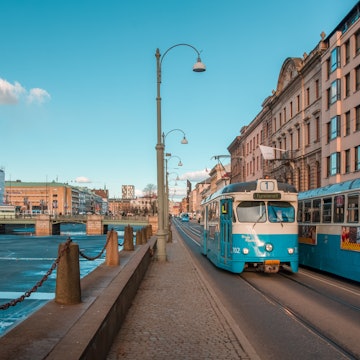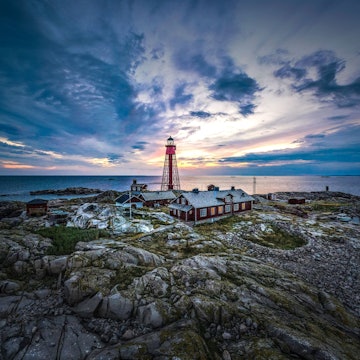

Gothenburg cityscape in summer. Photo by Rudi Steenbruggen/Getty Images
Gothenburg – or Göteborg – once an industrial powerhouse led by Volvo, has evolved into a cultural hot spot with an eco-friendly spirit. Since a clean-up project began in the 1980s, the city has been celebrated as one of Europe’s greenest destinations, powered by renewable energy and an extensive network of trams and cycle paths.
Yet originally, Gothenburg was built on maritime ambition. Founded in 1621 by King Gustavus Adolphus, the historic port featured Dutch-style canals and a star-shaped moat that still encircles the old town. Today, wandering through the old town’s passageways creates a constant sense of discovery, as if uncovering the city's hidden spots.
Meanwhile, the nearby neighborhood of Haga cannot hide its coziness. Strolling past its colorful wooden houses, you’ll find cafes inviting you to experience fika, the Swedish daily ritual of slowing down with coffee and pastries. And for an even more relaxed pace, venture to the car-free southern islands of the Gothenburg archipelago, where seaside serenity takes center stage.
Intrigued? Read on to learn more about Gothenburg and its coastal islands before your first visit.
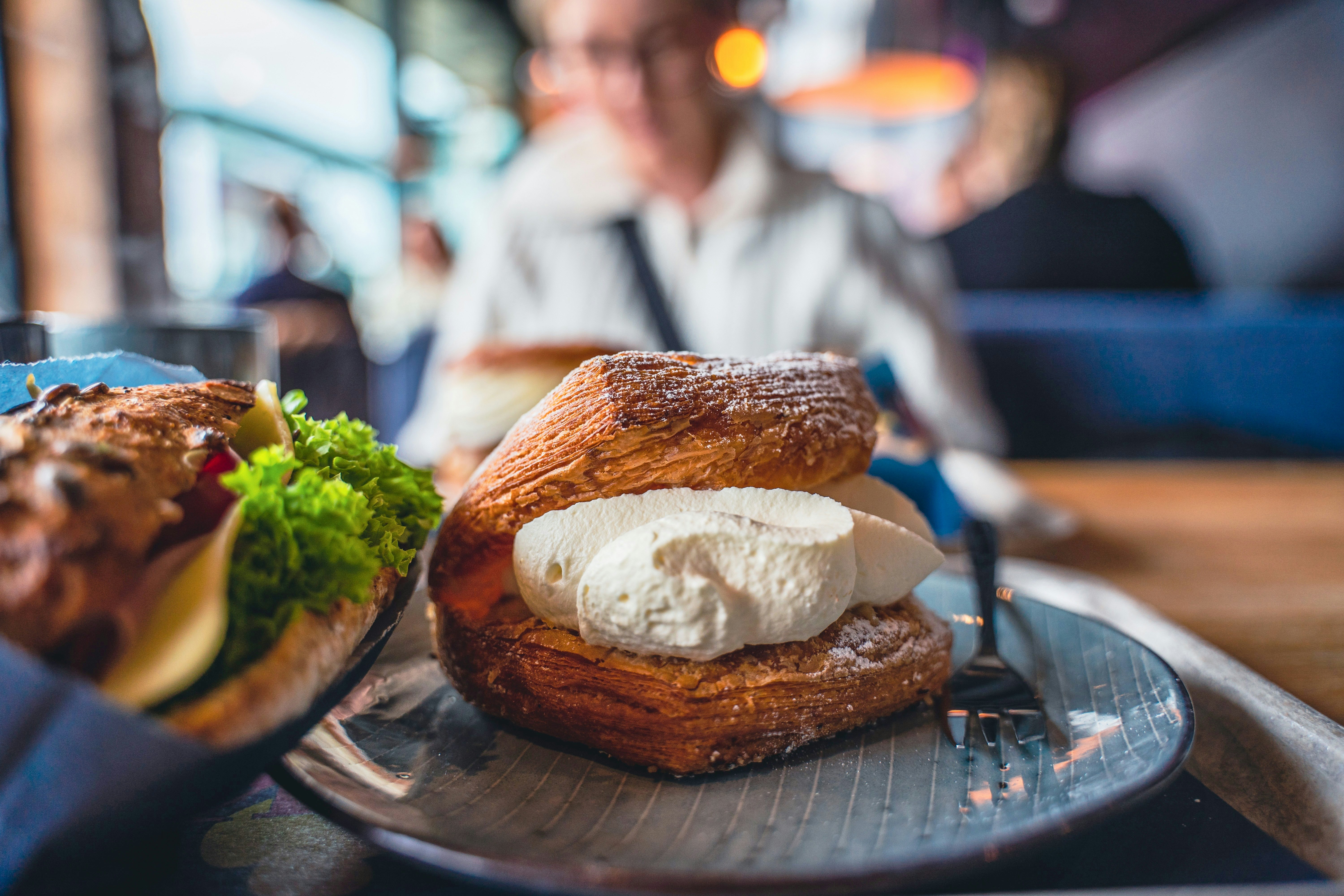
When should I go to Gothenburg and the coastal islands?
Gothenburg and the archipelago are at their busiest – and liveliest – in summer, between June and August, when Swedes tend to holiday as well. This is peak season, so hotels fill up fast, and the islands buzz with open cafes, shops and seaside activities, some of which close after summer. Expect pleasantly warm temperatures, often around 25°C (77°F).
For a quieter visit, September and October bring crisp air and golden foliage in Gothenburg’s parks and boulevards. While rain and fog become more frequent, showers are usually brief.
The winter season is especially lovely in late November and December, building up to Christmas cheer with decorations and festivities. But Gothenburg doesn’t lose its charm after the holidays. February brings the sweet tradition of semla, fluffy buns filled with cream and almond paste. In winter months, the temperature doesn’t dip much below 0°C (32°F). Also, some services on the archipelago close, but the natural beauty of the snow-dusted coast makes up for it.
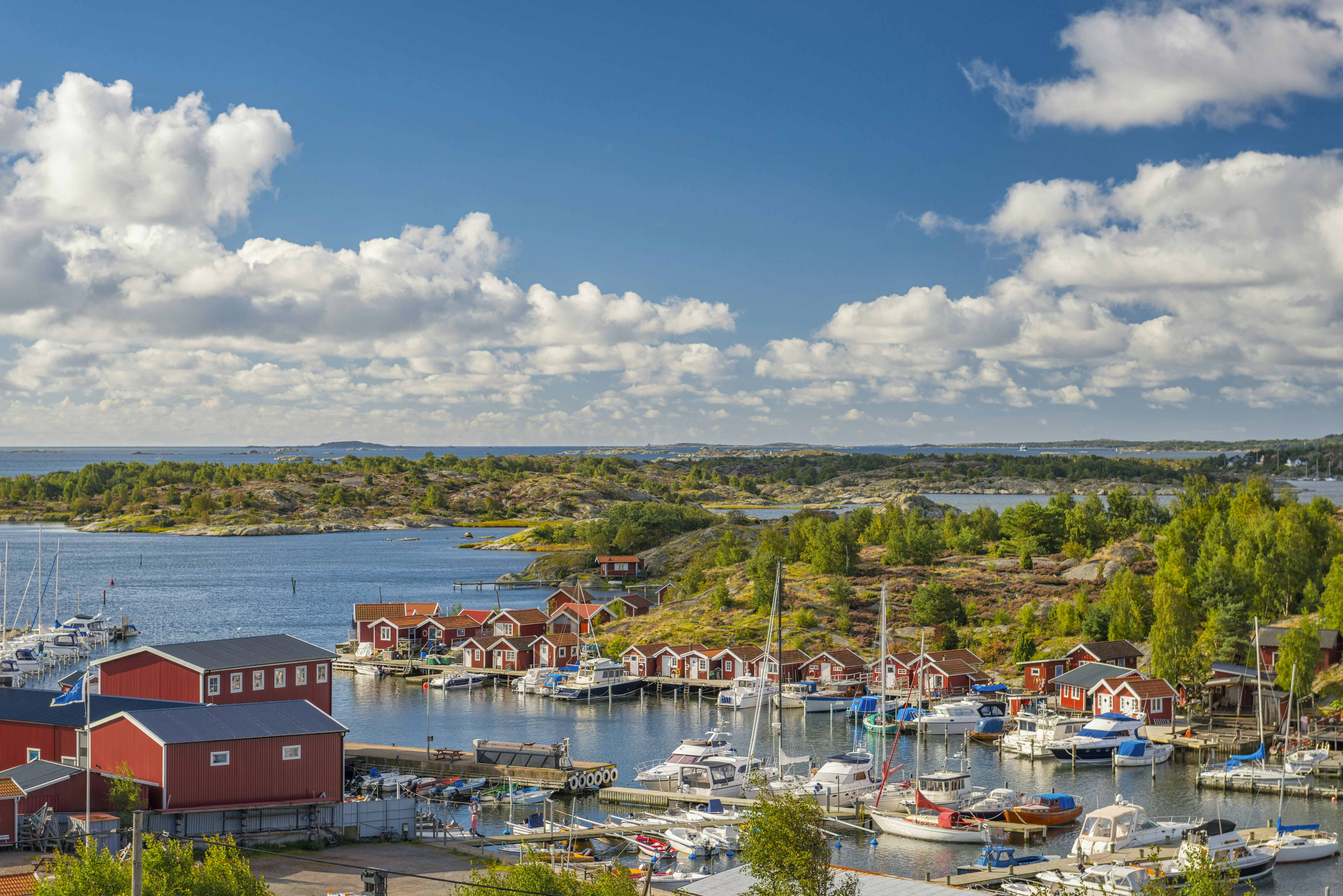
How much time should I spend in Gothenburg and the coastal islands?
A weekend will give you a good insight into Gothenburg’s highlights from the main museums to different neighborhoods – and you’ll still have time to enjoy a fika or two. However, allow three to five more days to venture outside the city to explore the archipelago and its smaller towns.
Is it easy to get in and around Gothenburg and the coastal islands?
Gothenburg has an excellent network of bike lanes and pedestrian-friendly areas. The city center is also compact, and the main neighborhoods, old town and Haga, are easy to explore on foot.
After arriving at Gothenburg’s International Landvetter Airport, you can take a taxi, use a rideshare app, such as Uber or Bolt, or buy a ticket to the Flygbussarna shuttle bus, which takes you to the Central Station in 50 minutes. Here, you’ll be right in the city center where taxis, buses and trams are easily picked up. The app for using public transportation is Västtrafik To Go, which also covers the coastal islands. The islands can be reached by buses, ferries or car – except for the southern islands which are car-free.

Top things to do in Gothenburg and the coastal islands
Explore the central neighborhoods of old town and Haga
Gothenburg’s charm centers around its old town, surrounded by a zigzagging moat, and the historic wooden house district of Haga. The old town, with 17th-century stone buildings, is home to everything from jazz bars and vintage shops to sleek eco-friendly boutiques. After exploring, grab a bite at the late 19th-century Stora Saluhallen market hall, where stalls serve local specialties like salmon soup and meatballs. Then, wander into the cobbled streets of neighboring Haga for picture-perfect boutiques, cozy cafes and a quaint, storybook atmosphere.
Learn about Gothenburg's history at World of Volvo and the Maritime Museum
To learn about the city’s industrial history, visit the recently opened World of Volvo near Liseberg amusement park. The circular building of wood and glass hosts a treasure trove of Volvos from the earliest models to more recent ones, including samples of buses, emergency vehicles and early models for electric cars. For a splash of seaside history, Sjöfartsmuseet – the Maritime Museum – is a must. Gothenburg is still home to the Nordics’ biggest port and Sjöfartsmuseet highlights the risks of seafaring, from treacherous trading routes and the dangers of the WWII to the modern shipping industry.
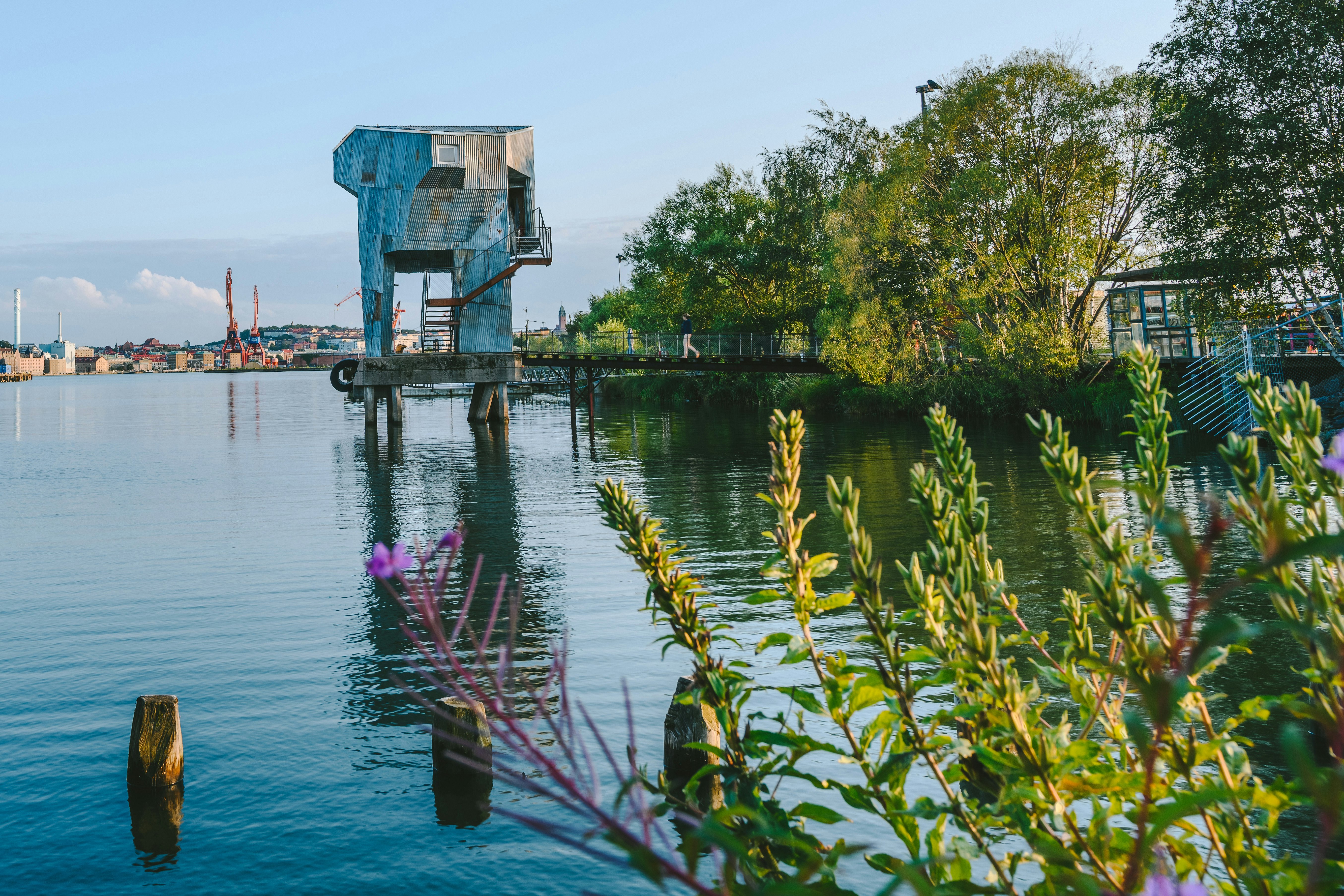
Find a saunas for all tastes and styles
Gothenburg is a great spot to embrace your inner Scandi and have a sauna session – or three. For a funky architectural feat, head to the public bastu (sauna) in Jubileumsparken at Frehamnen, just across the river Göta Älv that runs through the city. The sauna is constructed out of recycled material, and the sight is quite dystopian. Yet indoors, you’ll find a more traditional sauna setting to take in the riverside views and relax in the steam. The most iconic bathing establishment in Gothenburg is the art nouveau Hagabadet. Housed in a fabulous brick building from 1876, you’ll find a couple of pools and saunas here to while away an afternoon. For cool pool party vibes in the evenings, take a lift to Hotel Jacy’z's rooftop spa. Music, cocktails and pools guarantee a swanky sauna session with glittering rooftop views.
Slow down in the archipelago
Leave city life behind and take a ferry from Saltholmen, accessible by Tram 11 from Haga’s Järntorget, into the calm, car-free southern archipelago. Start with Styrsö, a hub of around 1400 people. From Styrsö, you can cross a bridge to Donsö, where you'll find picturesque wooden houses, salt-sprayed boathouses, and a converted ice factory, Isbolaget, serving fresh seafood in a waterfront setting.
In summer, the southern islands get crowded, making it a great time to head to the quieter northern archipelago. Ten of these islands are inhabited and can be reached by bus, car and ferry from Gothenburg. Hönö is the largest island in this area and is worth visiting year-round. To make the most of the hidden coves and beaches, embark on a 10km (6-mile) hike starting from Hönö Färjeläge (Hönö Ferry Terminal) and ending at the northern tip of Hälsö, where a bus will take you back to the start. This hike is part of the 27km (17-mile) Coastal Path.

My favorite thing to do in Gothenburg
Gothenburg, with its beautiful city center and abundance of great cafes, is perfect for aimless walks followed by fika. Although Haga is full of super cute cafes and giant cinnamon buns, and the neighboring Linné and Majorna districts offer a slightly rougher, livelier setting for idling away a few hours, my favorite spot is da Matteo on Magasinsgatan in the old town. Here, you can sip on skillfully prepared coffee accompanied by sweet pastries or healthy snacks. Climb upstairs, where you’ll also find da Matteo’s roastery and bakery. Exit through the back door to discover a hidden inner courtyard with Floramor & Krukatös, a charming flower and pottery shop run by a local mother–daughter duo.
How much money do I need for Gothenburg?
Gothenburg is a more budget-friendly destination than the flashier capital, Stockholm. In the low season, you can find high-end hotel deals for around 2000–3000kr (US$198–297). A standard double room typically costs around 1500kr (US$149) while a room with a shared bathroom will set you back 450kr (US$45) and a bed in a dorm 280kr (US$28). In the archipelago, accommodation options are more limited, but you can find rooms starting at around 780kr (US$77). When eating out, you can spend almost as little or as much as you like. Light lunches can be found for under 100kr (US$9.92) whereas fine-dining dinners for two start from 1300kr (US$129).
Basic hotel room in the city center: 1500kr (US$149)
Upscale hotel room: 2000–3000kr (US$198–297)
Public transport ticket: 36kr (US$3.57)
Coffee: 30–45kr (US$2.98–4.46)
Light lunch: 90–170kr (US$8.93–16.86)
Simple dinner: 150–250kr (US$14.88–24.80) per person
Fancy dinner: from 650kr (US$64) per person
Domestic beer at the bar: 60–90kr (US$5.95–8.93)
Cocktail: 145–170kr (US$14.38–16.86)
Can I use euros here?
Sweden uses the Swedish krona (kr or SEK), meaning “crown”, and not the euro. As a guideline, 100kr is approximately €9.10. You’ll rarely need cash in Gothenburg as most places accept international bank cards and public transportation can be paid via an app.
Is English spoken here?
English is spoken widely, and well, in Gothenburg. Adding tack, thank you, to the end of a sentence is appreciated. To ask for a coffee and a cinnamon bun, say: "Kan jag få en kaffe och en kanelbulle, tack?"










